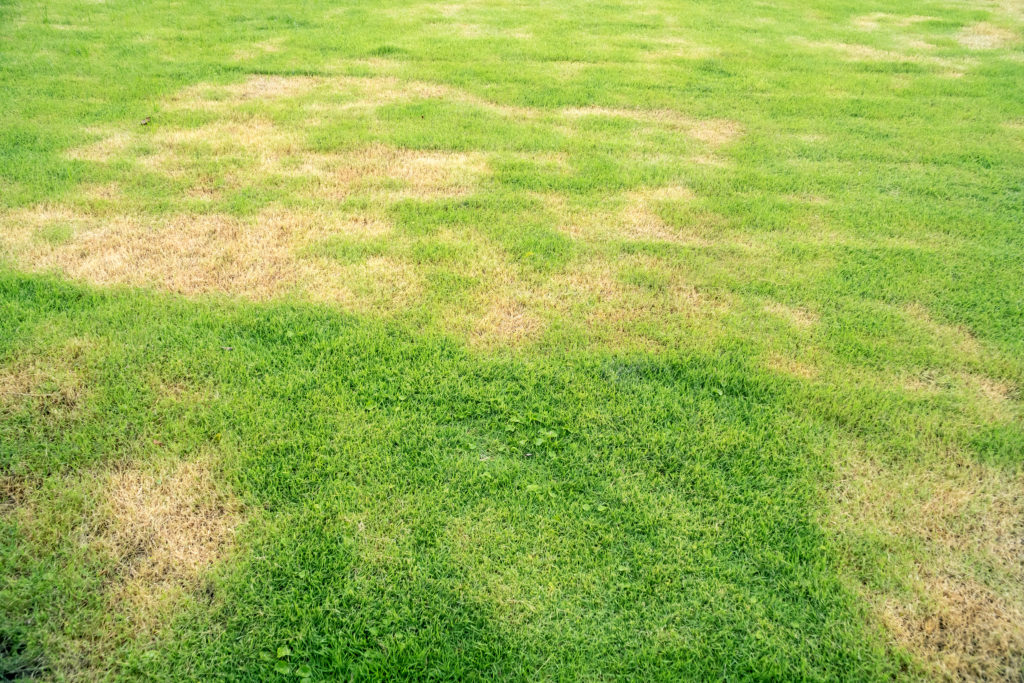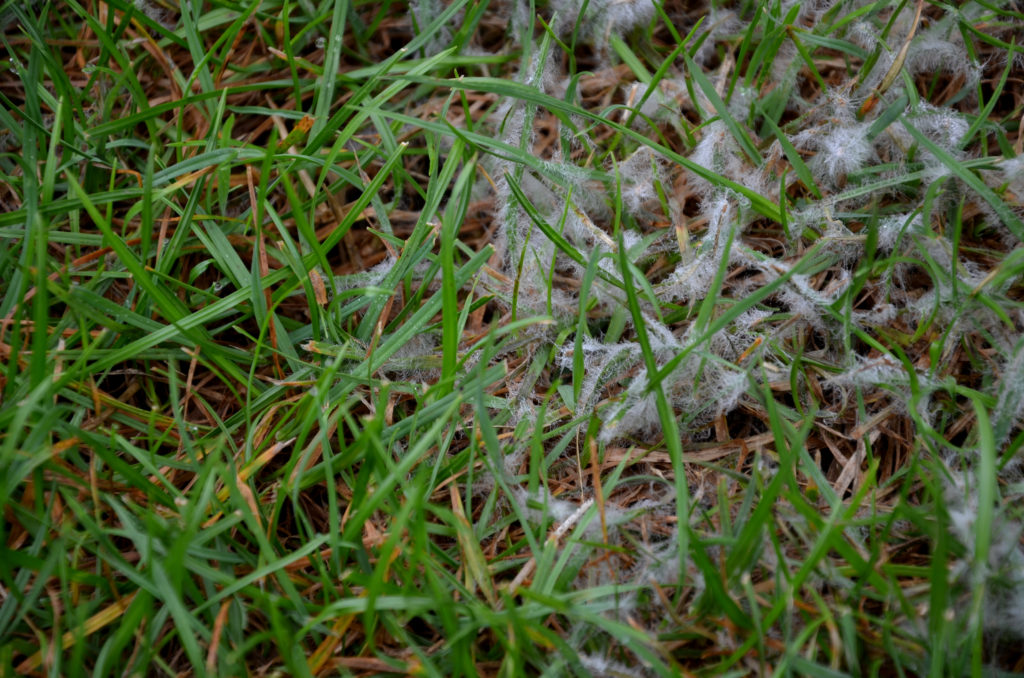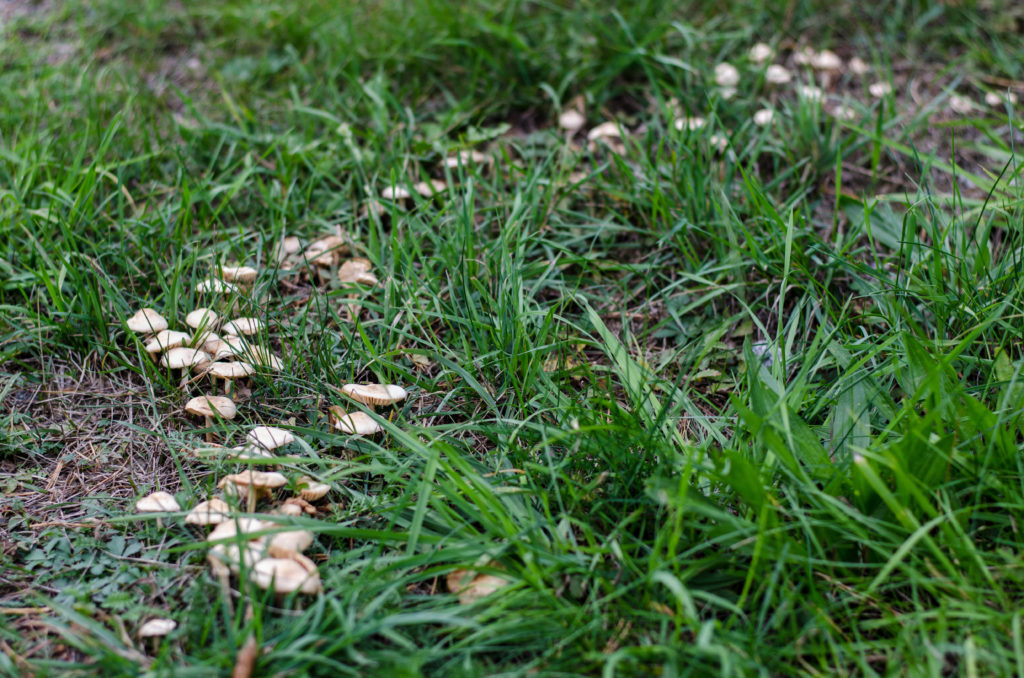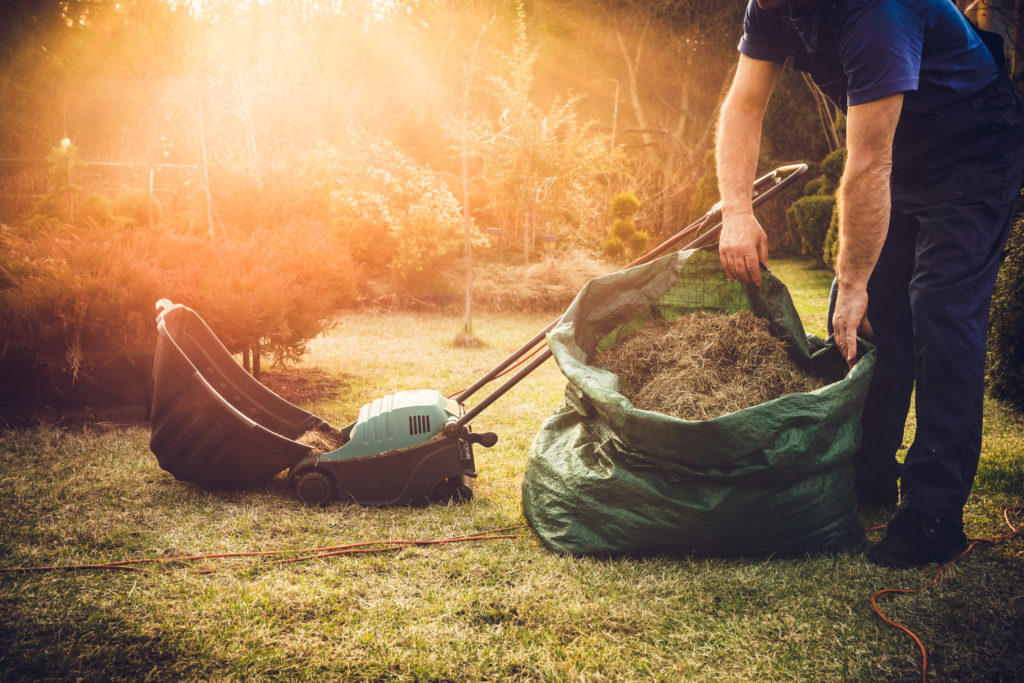Spreading grass seed or other light material? Pull the right adjustor to close by increments. Spreading large fertilizer granules? Pull the left adjustor by increments to balance the spread pattern!
Headache trying to sort out your lawn problems? Unsure how to recognize issues you have in your yard and how to fix them?
You’re fed up with looking at the bumps, lumps, and dead grass that make up your lawn.
Finally, you’ve resolved to take it in hand and do something about it. But, where to start?
With this in mind, read on.
Here you’ll identify the most common lawn problems you face:
- Tackle mowing failures
- Crush mushrooms, moles, and moss troubles
- Defeat shady sites and snow mold dilemmas (yes, snowfall can cause havoc with
your grass!) - Vanquish worm casts, drought, and pet pickles
- And a whole lot more …
Get to grips with the biggest frustrations you’ll face when trying to create a beautiful
backyard. Above all, transform your grass into a picture-perfect lawn for year-round
enjoyment.
Weed Out The Worst Culprits
Let’s start with weeds. Those damaging plants growing in the wrong place. Some of them, such as flowering weeds are pretty to look at and do serve some purpose as they attract bees and butterflies.
However, weeds are thugs, and overpower any unhealthy grass swiftly, leaving your lawn looking a mess. They compete with turf for light and nutrition, soaking up any goodness meant for the grass you do want to tend.
As you will see below, many of these weeds look like grass. Often it’s hard to tell the difference! Pay attention to strange-looking tall grass that defies the mower blades. Or large clumps of low-lying green – looks as if it is crawling on its belly, crablike. These differences will alert you to problematic plants in your lawn.

1. Flowering Weeds
Pretty to look at, but deadly to lawns. Don’t be taken in by these weeds! Dandelions, daisies, and buttercups are the most well-known. Lesser trefoil, with its yellow clover like flower, chickweed, and yarrow (Milfoil) is also in this category.
Together with others such as blue speedwell, these flowering weeds quickly colonize bare patches and unhealthy grass. The best way to get rid of these weeds is to pull them out by hand.

2. Grassy Weeds
As the name suggests, these weeds look like grass! It is difficult, sometimes, to figure out if this is lawn grass or not. Weeds such as crabgrass grow in clumps of yellowish green within your lawn.
Rather like a mat, they grow close to the ground and will not be picked up by the mower. Being left to run wild across your lawn, they will do their best to soak up nutrients and water, stifling healthy grass along the way.

3. Grass-like Weeds
This is another species of weed that is similar to grass in appearance, and much the same as grassy weed is resistant to being cut with the lawn mower. Unlike crabgrass which lies low to the surface of the soil, grass-like weed grows tall and thin, with strong tubular-shaped stems.
Shiny in appearance, these grass-like weeds can include wild garlic and wild onions. Another giveaway is the small white bulbs clustered beneath the surface of the soil. Remove all the bulbs to eradicate the problem.

4. Moss
Ever felt a spongy bounce when walking across your lawn? Chances are it’s moss below your feet, rather than healthy grass.
Caused by poor growing conditions (either through drought or saturated because of impaired drainage), moss is quick to populate bare patches and smother grass. Add in complications such as shade – under trees is a particularly common spot to find moss – and lack of regular lawn care, and you’ll soon discover this unattractive weed takes over.
One way to combat moss is to maintain good drainage, patch any bare spots and keep your lawn healthy with a quality fertilizer.
Check out this article on how to get rid of weeds in lawn for more in-depth information on how to tackle weeds.
Disease & Mold: Common Lawn Problems to Blight Grass
Disease in lawns shows up when the grass is weak and unhealthy, just like us humans. Nitrogen deplete soils will be susceptible, especially when heavy dews and humid air spread spores around.
The answer?
Crush disease and mold by creating a good regime of mowing at the right height, fertilizing properly, and keep the soil aerated.
Here are just a few of the issues you may encounter.

5. Rust in Lawn
Rust in lawn is a fungal disease, found on the blades of grass during late summer. As the grass growth has slowed and the plant is low on nitrogen, rust creeps in.
Rust is an orange-red color dust (spores) coating the leaf. As with any dust, be mindful of
cleanliness, as the spores will transfer easily, and spread the disease. Make sure to wash
down all your equipment after use. A good maintenance program in the fall will help to clear
up rust.
6. Red Thread
Another fungal disease to watch out for is red thread. If you’ve spotted pinky-red needle-like stems jutting through the green of your lawn, you are likely to be looking at this disease.
Whilst it won’t kill your whole lawn, red thread leaves behind dead patches of grass threaded through with red. It looks unsightly, and will eventually smother healthy grass. Although it can appear at any time of year, red thread tends to be brought on by wet summer weather, especially in grass deficient in nitrogen.

7. Fusarium Patch and Snow Mold/Mould
Prolonged damp weather in autumn will often encourage fusarium patch. As the name suggests, this grass disease shows up in patches across the lawn. With a coating of pinkish-white threads when wet, the disease smothers grass, cutting it off from health-giving light and air.
With relatively mild air temperatures and damp conditions, the fusarium patch loves drizzly, foggy days when nothing stirs the air.
Of course, snow is the ultimate in detrimental grass blankets! And these snow mold patches show up as soon as the snow melts.
8. Leaf Spot and Melting Out
Other names for leaf spot include leaf blight or net blotch. This lawn disease is caused by fungi. The damage can be seen on the grass blade, showing up as brown spots. As this lawn problem spreads rapidly in warm, humid weather, it’s important to curb its rampage.
More often than not, leaf spot progresses into melting out. Melting out takes the disease further into the crown and roots of the grass, rotting everything in its path.
9. Dollar Spot
As the name suggests, this lawn problem presents as a dollar-sized round spot of pale turf.
Similar in appearance to red thread, the blade tips are reddish brown in color. However, this
disease causes the lawn to sink slightly and become uneven in appearance, before dying
back.
Again, humid, summer weather will have this lawn problem on the march, especially in areas
of shade and compacted soil.

10. Fairy Rings
Fairy rings can show up on lawns in several different ways. The one thing they do have in common, though, is their circular nature. As you would expect from their name, they often show up unexpectedly. And, annoyingly, all types of lawn can be affected.
However, there’s no doubt that unhealthy, compacted turf will be more susceptible. There are 3 distinct variations:
- Fairy rings with mushrooms/toadstools
- Fairy rings growing as a lush, vibrant circle within pale yellowed grass
- Fairy rings where dead grass is surrounded by healthier grass
Eradicating this disease can be tricky, but with a good maintenance plan, removing thatch, and digging out dead patches, you will be able to control its advances. Reseed with fresh, quality seed and nurture for best results.
Pets and Animals
We all love our pets and enjoy watching visiting wildlife. But, we don’t always love the destruction they leave behind!
Yet, it’s not only the animals above ground that cause damage. Moles, grubs, and even ants are a nuisance, spoiling the good looks of your backyard lawn. Read on for innovative ways in being able to combat the destruction.

11. Pet Urine Spots
One fallacy to rear it’s head when discussing pet urine lawn problems is that it’s a female dog dilemma. In fact, any dog, either male or female, can cause urine spots, as it is down to the amount of nitrogen being released from the individual animal.
Too much nitrogen being sprayed onto the grass will upset the balance of pH, causing damage, and resulting in dead grass.
There are several ways to combat the uneven greenness in your lawn:
- Hose the area with water once your pet has urinated. This dilutes the nitrogen before it has a chance to fertilize the grass.
- Consider a pet training post. This small, pheromone-treated garden stake will encourage your pet to urinate in one particular spot, helping to contain the issue in an more suitable area of your yard.
- Add a natural remedy to food or drinking water bowls. These remedies are 100% safe and help neutralize your pets urine. A couple of suggestions would be Green Peez – a liquid to add to their food, or Dog Rocks to add to their drinking water.

12. White Grubs and Insects
The trouble bugs and insects inflict on your backyard can be hard to detect. The damage only becomes obvious once the grass has died back and you’re left with bare patches. This is when it’s important to do some detective work and uncover the real reason behind your sickly lawn.
Dig down below the surface of the grass and see if you can expose any fat, white grubs. White grubs are the hatched eggs of common beetles, laid in soil during the summer months. Hatching some two weeks later, the grubs have a ready source of food – grass roots, which they set upon with a vengeance.
Lying dormant through the winter, the grub starts back to its feeding frenzy in spring, before transforming into adults in early summer.
Other insects you may encounter in your lawn are ants, bees, crane fly and leatherjackets. Although most lawns have a small number of these insects living in the turf or soil, little damage occurs. Problems arise when insect numbers increase. Your attention may well be alerted when wildlife or birds continually scratch around in the turf hunting out these tasty morsels!
Best way to deal with grubs and insects is to maintain a healthy lawn, not giving bugs an opportunity to lay eggs in bare soil.

13. Moles, Voles and Raccoons
Moles, voles and raccoons are on the hunt for food! They will be after the bugs and insects lying in your lawn. A good thing in some ways, but the damage they do in finding their prey is as bad as the insects themselves.
Moles, of course, burrow up from below the surface of the grass, leaving behind them mounds of soil. It is the large amount of soil above ground that causes the problem, as much as the animal itself.
Getting rid of moles is tricky, and not at all straightforward. Professional services or a tunnel trap are best countermeasure. Once you’ve dealt with the mole, you can carefully repair the damage by refilling the soil back into the hole, and if necessary, reseeding the patch.
This article gives great overseeding and reseeding advice – How to Overseed a Lawn for Lush Grass All Year.
14. Worm Casts
These pesky, wet soil piles become a lawn problem when squashed. Often pounded flat when mowing or walking on the lawn, they make an ideal seed bed for weeds. Taking the line of least resistance, weeds will swiftly multiply in this rich source of soil, causing untold damage to your lawn.
Best way to deal with worm casts is to let them dry and then sweep away with a stiff broom before mowing the grass.
Fertilization, Compaction and Aeration
There’s no doubt that lawn left to its own devices quickly becomes sick. Compaction through overuse, be it kid’s playing football or garden parties, leaves soil depleted. Unable to breathe, grass starts its slow decline.

15. Fertilization
There’s a fine balance between over fertilizing or not fertilizing enough. Too much nitrogen and it encourages grass to grow too much. Not enough fertilizer and your lawn swiftly becomes pale and weak.
Each end of the fertilizer spectrum means your lawn is unable to withstand extremes of temperature, roots become weakened, unable to absorb enough water and prone to disease.
Check out the Cresco Spreaders article on the best time to fertilize lawn for tip top backyard care.

16. Compacted Soil and Aeration
When the soil becomes compacted, it is unable to absorb vital nutrients and water. Water will run off and air will be unable to circulate around the roots of the plants, creating dead patches.
And we all know weeds LOVE dead patches!
Aeration is key to breaking up the soil, allowing water to penetrate and air to flow. Read our guide on how to aerate your lawn with step-by-step guide to the when, why and how’s for best lawn care advice.
Bald Spots, Shade and Dead Grass
Bald spots and dead grass can show up at any time, caused by any of the lawn problems we’ve already discussed.
But, what to do about them when they occur?
We take you through a handful of problems and help you fix them.

17. Thatch and Brown Patches
Thatch and brown patches are best dealth with by setting up a good lawn management program. Essentially, patches and thatch build up when the grass is under stress and is not getting enough nutrients, water and air.
Here are 7 vital tips to dethatching:
- Mow Your Lawn
- Clear any further debris
- Use a dethatching machine
- Clear up by using a rake
- Re-seed any bare spots
- Spread fertilizer
- Apply water
Get the low down on when to dethatch your lawn, as we take you through the steps you’ll need.

18. Bare Spots and Uneven Growth in Shade
Here, bare spots are often caused by mowing too close to the surface of the soil. Stripping the grass of its ability to photosynthesis will weaken the plant, and eventually lead to its death.
Uneven growth in shade is an issue, especially underneath trees, where the grass is unable to get enough nutrients, water and light. Choose shade tolerant grass types and make sure to keep surrounding trees well pruned.
Mowing, Water and Weather Issues
Some of the worst lawn problems to overcome are those of mowing, water and weather. They are tricky to control, and often create other problems, as we’ve discussed elsewhere in this article.

19. Mowing
Many people have a love-hate relationship with mowing the lawn! And, perhaps that’s why so many lawn problems arise from this one activity.
It’s tempting to do one mow, taking the grass down to a low height in an effort to cut out a time-consuming chore. But, beware of scalping! The stress to your lawn is not worth it. You will only have to spend more time – and money – fixing the problem.
Leave it a little longer, and mow more frequently. Your lawn will repay you with a beautiful display.

20. Drought Stress
Like a thirsty man in a desert, grass needs water to survive. But here’s the thing. Grass needs to be watered infrequently, but deeply. A sprinkle of water does not get the job done, as it only dampens the top leaves and doesn’t soak through deeply enough to reach roots.
Choose to water drought stressed grass in the cooler parts of the day, and water sparingly for a long time. This will ensure the roots deep below the surface of the lawn receive the vital water they need to thrive.

21. Overwatering
Overwatering grass will drown the roots, that goes without saying. But how can you control the rain? By knowing your soil type, you’ll be able to balance out issues such as clay soils to enable better drainage.
Too much water and those water loving weeds, such as moss, will rear their ugly heads. By conditioning soil you will help balance out overwatering and allow nutrients to be absorbed, rather than running straight into the drain.
Take a look at this article for more lawn care tips and maintenance guide for healthy grass.
How to Spot & Fix the Most Common Lawn Problems
There are a myriad of common lawn problems grass encounters when in poor health. But, learning how to spot the most obvious ones before they take hold and destroy your backyard will stand you in good stead.
Fixing them is so much easier when you know what you are dealing with. Here at Cresco Spreaders we are dedicated to helping you overcome your grass troubles to achieve the backyard of your dreams.


